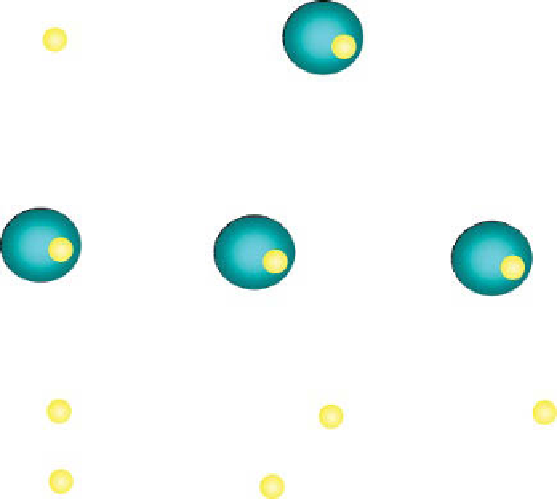Biomedical Engineering Reference
In-Depth Information
Extracellular
Intracellular
Lysosome
Disrupted
endosome
Endosome
H
+
mRNA
Cell exit
Bound to mRNA target
fIgure 13.6
Problems attendant with always ON probes such as PeT imaging agents. To
obtain a nucleic acid target-specific signal, unbound probe or reporter must exit the cell. Any
probe trapped in endosomes and lysosomes or unable to exit the cytoplasm will result in a
background signal that can overwhelm the target-specific signal. Therefore, ligands promoting
cell exit or environmentally sensitive linkers to the reporter that will allow it to efflux from the
cell may need to be installed.
in the delivery vehicle. Other turn-on probes have also been developed that rely on a
change in the fluorescence of a single fluorophore upon binding of an antisense agent
to the target mRNA as exemplified by forced intercalation (FIT) probes (Fig. 13.7d)
[94, 95]. The sensitivity and selectivity of the FIT probes can also be enhanced by
FReT mechanisms in combination with quenchers and acceptor fluorophores.
Another class of turn-on probes relies on a chemical reaction to activate fluores-
cence (Fig. 13.7e) [84, 85]. many of these are based on binary probes in which a
reaction takes place between the two antisense strands. In one formulation of this
approach, a catalyst is appended to one antisense strand and a fluorogenic substrate
is attached to another, shorter antisense strand. The binding of the catalytic compo-
nent converts the mRNA into a fluorescence-activating enzyme, which can then turn-
over multiple fluorogenic substrates. This would be especially important for imaging
low-abundance mRNA probes. This type of system has been shown to work
in vitro
,
but not yet
in vivo
[96-101]. The major hurdle is to develop a catalyst that can catalyze












































Search WWH ::

Custom Search